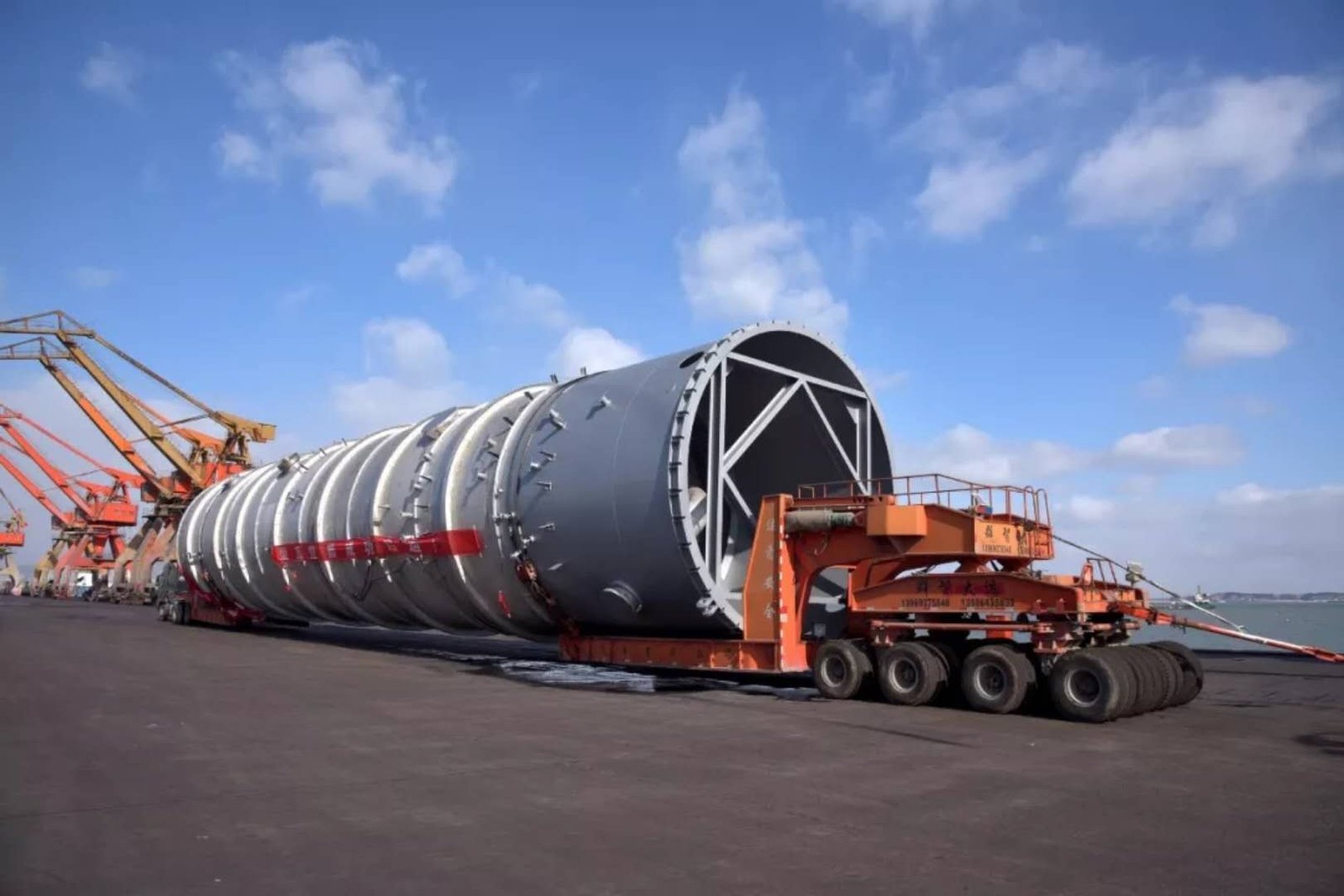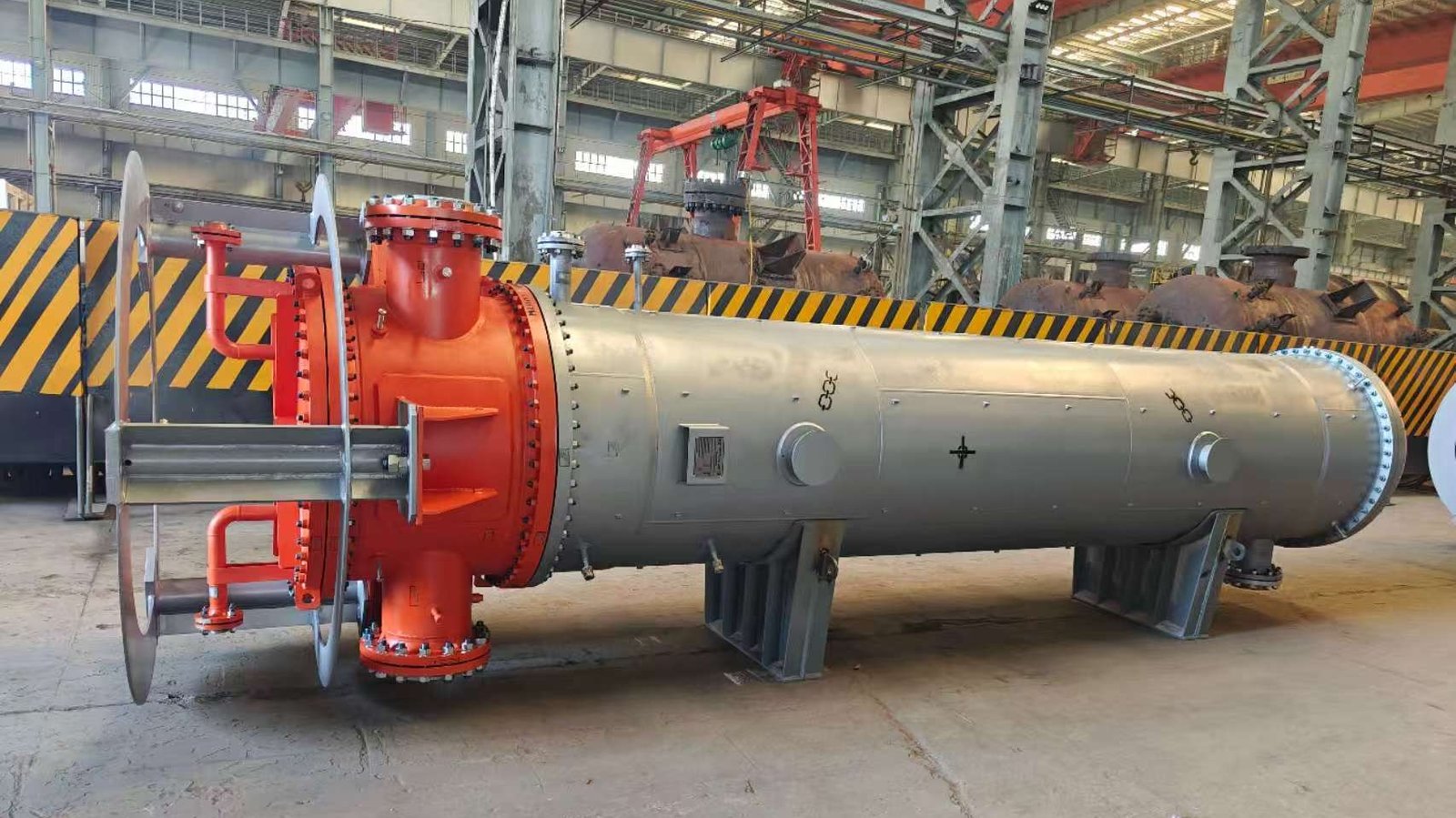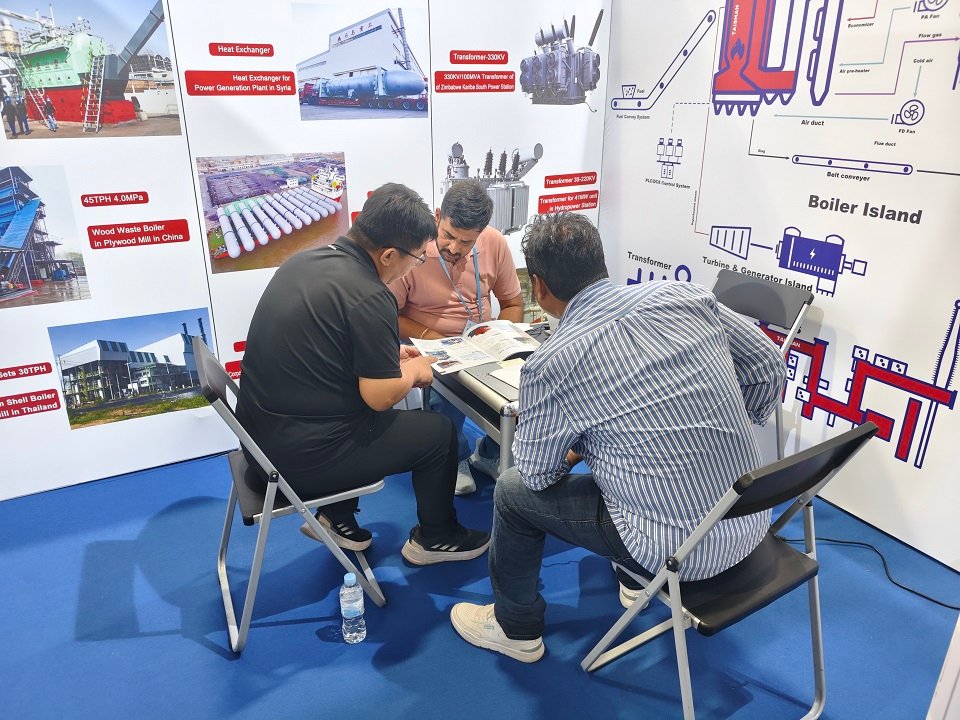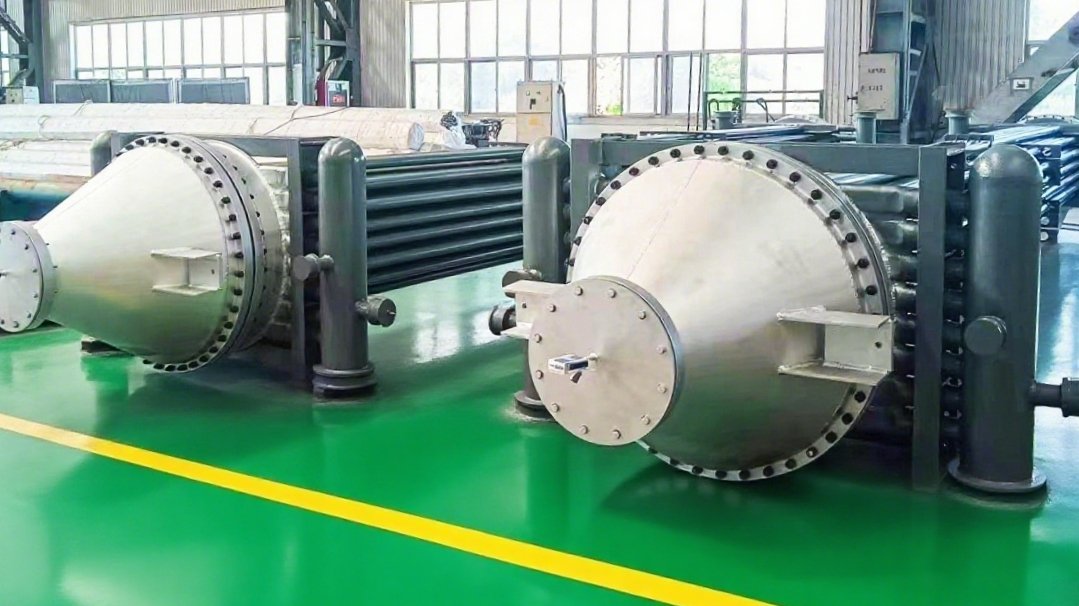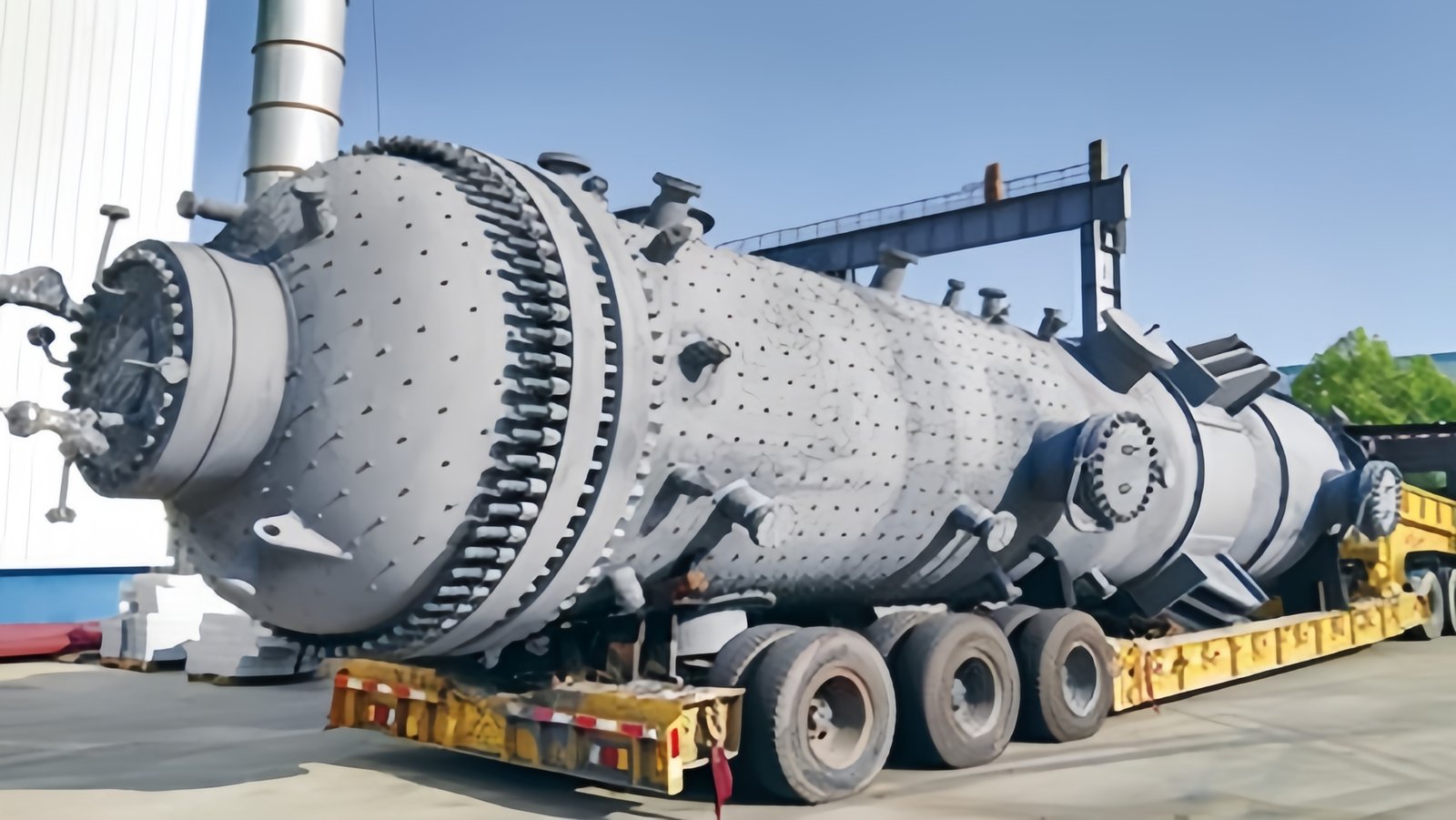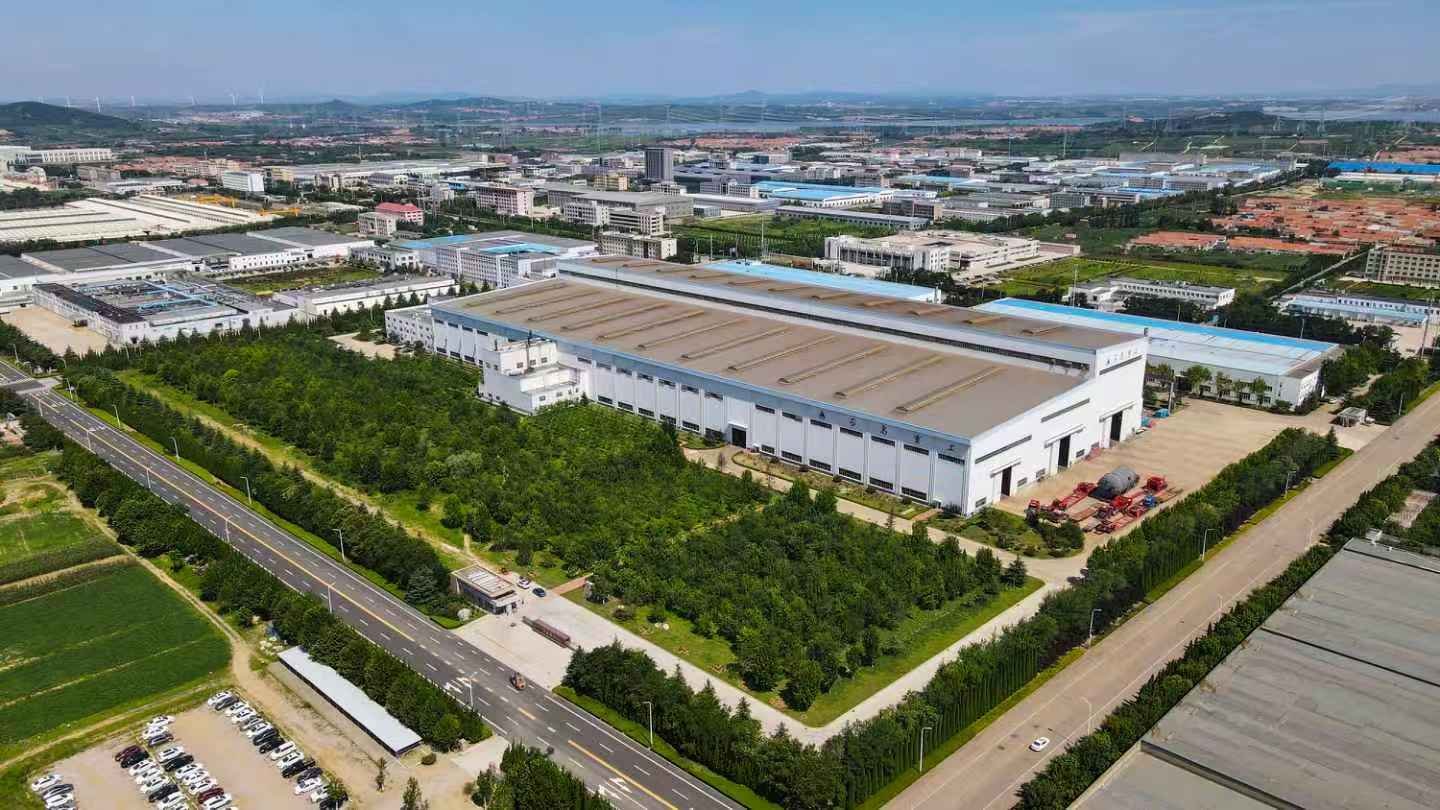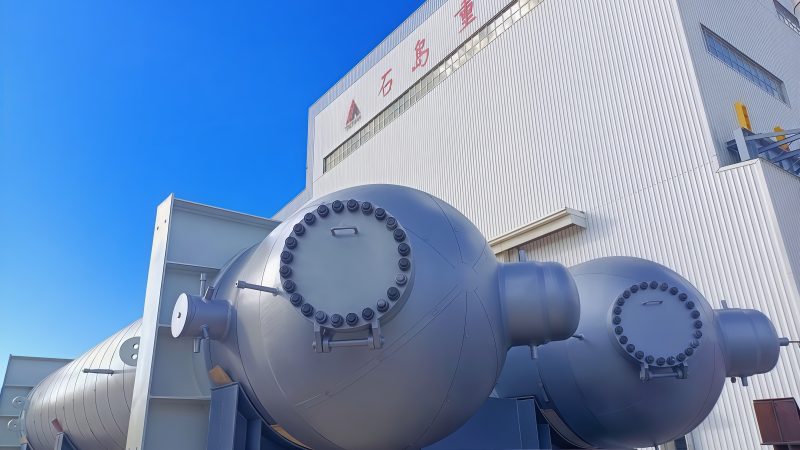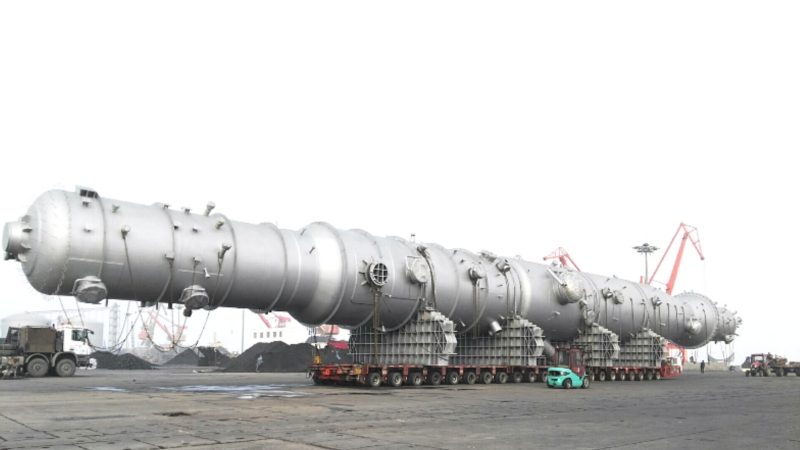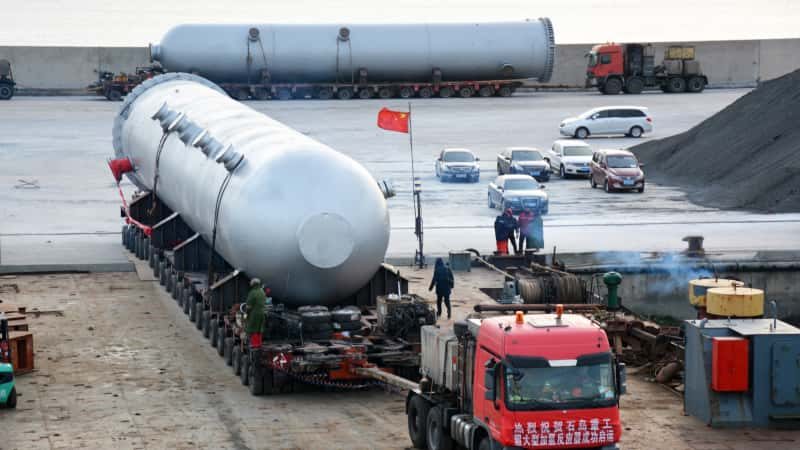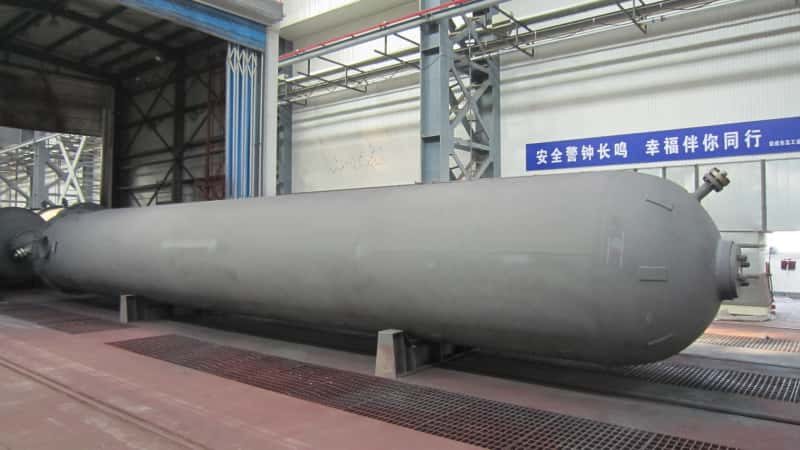In industries such as chemicals, pharmaceuticals, petrochemicals, and energy, high-performance processing equipment is essential for operational efficiency and safety. Among the most critical components is the reactor—an advanced pressure vessel used to carry out and control chemical reactions under specific temperature and pressure conditions. Many customers are unsure about what defines a reactor, how it differs from a standard pressure vessel, or what design factors they should prioritize. If a reactor is poorly designed or selected, it can lead to process failure, safety hazards, or significant financial loss. Understanding the fundamentals of reactors is the first step to making the right purchasing and engineering decisions.
A reactor is a highly engineered pressure vessel specifically designed to safely conduct chemical reactions under controlled pressure and temperature. It typically features mixing systems, thermal regulation (heating or cooling), internal linings, and mechanical reinforcements to ensure chemical stability, operational safety, and process efficiency. Reactors are essential in industrial production lines and are built to strict international standards to guarantee their performance and durability.
Whether you’re a procurement manager, process engineer, or technical decision-maker, knowing how reactors are defined, classified, and customized will help you select the right equipment. The following content provides a comprehensive guide from the perspective of a professional pressure vessel manufacturer.
What is a reactor in the context of pressure vessel manufacturing?
In the world of chemical and industrial processing, failing to use the correct type of vessel for handling high-pressure reactions can lead to catastrophic safety issues, contamination, and reduced productivity. Many plants struggle with choosing the right system when scaling up processes from lab to industry. If a process involves heat, pressure, or a controlled chemical reaction, simply using a basic container or storage tank won’t suffice—it can result in dangerous failures or severe production inefficiencies. The solution? Understanding and choosing the proper reactor as a specialized type of pressure vessel is essential for safe, efficient, and compliant operations.
A reactor in the context of pressure vessel manufacturing is a specialized container designed to facilitate and control chemical reactions under regulated temperature and pressure conditions. These reactors are engineered with robust materials, internal mixing systems, heating/cooling jackets, and safety mechanisms to support safe and effective reactions between substances in industries such as pharmaceuticals, petrochemicals, food processing, and materials manufacturing.
When selecting equipment for high-pressure or high-temperature processes, it’s critical to differentiate between a standard pressure vessel and a purpose-built reactor. A reactor isn’t just a vessel that withstands pressure—it’s a complex system that can support thermal exchange, controlled agitation, catalyst circulation, and more. Let’s explore what truly makes a reactor special in pressure vessel manufacturing, the different types, the technical design considerations, and why they are indispensable in modern industrial processes.
Reactors used in pressure vessel manufacturing are just oversized tanks.False
Reactors are purpose-built vessels designed to support and control chemical reactions, unlike storage tanks that only hold materials without active processing.
🧪 Understanding the Role of Reactors in Pressure Vessel Manufacturing
Reactors are central to many industrial chemical processes, where substances are transformed via chemical reactions. Unlike storage tanks that merely contain materials, reactors provide dynamic environments where temperature, pressure, and agitation must be tightly controlled.
📊 Common Applications of Reactors vs. Pressure Vessels
| Feature/Function | Pressure Vessel | Reactor (in pressure vessel form) |
|---|---|---|
| Main Purpose | Storage or containment | Chemical processing & reaction control |
| Pressure/Temperature Resistance | High | High |
| Agitation/Mixing | Rare | Always included or optional |
| Heating/Cooling Jackets | Sometimes | Common and often essential |
| Reaction Kinetics Involvement | None | Central to design |
| Industry Use | Oil & gas, water, air tanks | Pharma, chemicals, food, biofuels |
Where pressure vessels are typically static units, reactors are engineered systems designed around reaction kinetics, heat transfer, and fluid dynamics.
🔧 Core Design Elements of Reactors
1. Pressure and Temperature Ratings
Reactor design must adhere to the ASME Boiler and Pressure Vessel Code (BPVC Section VIII) and additional standards like API 660 or DIN EN 13445. Parameters include:
- Design Pressure: Based on the maximum internal pressure from the reaction
- Design Temperature: Covers expected operational ranges, often from -20°C to 400°C
- Wall Thickness: Determined using calculations that factor in pressure, material strength, corrosion allowance, and weld efficiency
2. Materials of Construction
Material selection is critical, not only for strength but also for chemical compatibility:
| Common Reactor Materials | Suitability | Notes |
|---|---|---|
| SS316L | Corrosion-resistant chemicals | Pharma and food safe |
| Hastelloy C-276 | Highly corrosive environments | Used in acids and aggressive chemicals |
| Titanium | Chlorine and seawater resistance | High cost, niche use |
| Carbon Steel | General purpose, economical | Needs lining or coating for many chemicals |
3. Agitation and Mixing Systems
A major differentiator between reactors and storage tanks is the inclusion of mechanical agitation systems:
- Impeller types: Rushton turbines, axial flow impellers, helical ribbons
- Drive systems: Top-mounted, bottom-mounted, magnetic drive (for sealed systems)
- Variable speed control: Enables tuning to match reaction phase (gas-liquid-solid)
4. Thermal Regulation: Jackets and Coils
Reactors often require tight thermal control to drive endothermic or exothermic reactions:
| Jacket Type | Advantage | Limitation |
|---|---|---|
| Full Dimple Jacket | High surface area, uniform heating | More expensive |
| Half-Pipe Coil | Good for high-pressure fluids | Complex fabrication |
| Internal Coils | Direct contact, high heat transfer | Difficult to clean and inspect |
This design ensures that temperature fluctuations do not derail the reaction or cause safety hazards.
5. Nozzle Configuration and Instrumentation
Reactor vessels include a variety of nozzles and ports for:
- Charging reactants
- Sampling
- Instrumentation: temperature probes, pressure gauges, level transmitters
- Relief valves and rupture discs for safety
- Sight glasses for visual monitoring
6. Types of Reactors in Pressure Vessel Manufacturing
| Reactor Type | Description | Application |
|---|---|---|
| Batch Reactor | Processes run in batches, fully drained each time | Pharmaceuticals, specialty chemicals |
| Continuous Stirred Tank Reactor (CSTR) | Continuous feed and output, constant conditions | Petrochemical and polymer production |
| Plug Flow Reactor | Flow through a tubular reactor with minimal mixing | Gas-phase and liquid-phase reactions |
| Loop Reactor | Re-circulates contents for high mixing efficiency | Fermentation and biochemical processes |
| Packed Bed Reactor | Solid catalyst in bed with reactants flowing through | Hydrogenation, catalytic cracking |
Each type has specific reaction profiles, and their pressure vessel design must support these process dynamics.
📉 Pressure & Temperature Design Criteria Chart
| Parameter | Low-Pressure Reactor | Medium-Pressure Reactor | High-Pressure Reactor |
|---|---|---|---|
| Pressure Range (bar) | < 6 | 6 – 40 | > 40 |
| Common Materials | SS304, SS316 | SS316L, Alloy 20 | Hastelloy, Titanium |
| Wall Thickness (mm) | 6 – 12 | 12 – 20 | 20+ |
| Common Standards | ASME Section VIII Div 1 | ASME Section VIII Div 2 | PED 2014/68/EU, API 660 |
| Thermal Control Type | Basic jacket | Dimple jacket | Half-pipe coil, internal coil |
This table helps engineers quickly identify the appropriate class of reactor for their intended application.
🔬 Case Study: Pharmaceutical Batch Reactor Design
A pharmaceutical company required a 1000-liter glass-lined batch reactor for synthesis of a temperature-sensitive intermediate.
Design Highlights:
- Design Pressure: 6 bar
- Design Temp: -10°C to 150°C
- Material: Glass-lined carbon steel for chemical inertness
- Agitation: Anchor-type impeller with 20–100 rpm variability
- Thermal System: Full dimple jacket with glycol heat transfer
- Safety: Rupture disc, inert gas purge, level sensors
This reactor improved yield by 17%, minimized contamination, and complied with FDA and cGMP standards.
🚀 Why Reactors Are Indispensable in Pressure Vessel Applications
Reactors are at the heart of value-adding processes in multiple sectors:
- Petrochemical: Catalytic cracking, polymerization
- Pharmaceutical: API synthesis, crystallization
- Food Processing: Enzymatic hydrolysis, fermentation
- Green Chemistry: Bio-reactors for sustainable production
By integrating chemical engineering principles, material science, and safety systems, reactor pressure vessels enable repeatable, scalable, and safe transformation of raw materials into high-value products.
In Summary
Understanding what a reactor is in the context of pressure vessel manufacturing is critical for choosing the right equipment. It’s not just about holding pressure; it’s about enabling complex chemical reactions under controlled environments. From material selection to thermal regulation and instrumentation, each component of a reactor vessel is deliberately chosen and engineered. Reactors are not interchangeable with standard pressure vessels—they are the foundation of modern chemical and industrial production.
How Do Reactors Differ from Standard Pressure Vessels?
When designing or selecting equipment for high-pressure or high-temperature processes, many engineers and procurement managers mistakenly assume that any pressure vessel will suffice. This misconception can result in equipment failure, substandard product quality, and even safety hazards in the production environment. The confusion often stems from a superficial similarity in appearance—both are cylindrical metal tanks designed to contain pressure. However, reactors and standard pressure vessels are fundamentally different in purpose, design, and complexity. To ensure optimal performance, safety, and process efficiency, it is essential to understand the key distinctions between these two types of equipment.
Reactors differ from standard pressure vessels primarily in their function and design complexity: while standard pressure vessels are built to safely store or transport pressurized fluids or gases, reactors are engineered to actively facilitate and control chemical or biochemical reactions under specific conditions of temperature, pressure, mixing, and time. This makes reactors more complex, with integrated systems such as agitation, thermal regulation, and process instrumentation.
Recognizing these differences is essential for any professional working in process industries such as pharmaceuticals, petrochemicals, or food production. Misapplying a standard pressure vessel in place of a reactor—or vice versa—can be a costly and dangerous mistake. Let’s delve deeper into the specific ways reactors are distinguished from pressure vessels and why those differences matter.
All pressure vessels can be used as reactors in chemical processes.False
Only vessels designed as reactors—with proper mixing, thermal regulation, and reaction control—can safely and efficiently support chemical processes.
🎯 Functional Differences: Purpose and Operation
At their core, the function of the two vessels diverges significantly:
- Standard Pressure Vessel: Primarily serves as a storage or transport container for liquids or gases under pressure.
- Reactor: Designed to initiate, sustain, and control chemical or biochemical reactions within controlled environmental parameters.
This difference alone sets the stage for divergent design philosophies and regulatory considerations.
📊 Comparison Table: Reactors vs Standard Pressure Vessels
| Feature | Standard Pressure Vessel | Reactor Vessel |
|---|---|---|
| Primary Function | Storage / Containment | Chemical / Biochemical Reaction Facilitation |
| Internal Mixing | Not typical | Essential (agitation, turbulence control) |
| Thermal Control Systems | Rare (basic jackets only) | Common (coils, jackets, insulation) |
| Process Control Instrumentation | Limited (pressure/temp sensors) | Extensive (level, pH, viscosity, more) |
| Reaction Kinetics Design Basis | Not applicable | Integral (residence time, conversion rates) |
| Regulatory Standards | ASME Section VIII | ASME + API/IEC/ISO as needed |
| Cleaning/Inspection Ports | Minimal | Designed for Clean-in-Place (CIP) or manual |
| Capital Cost | Lower | Higher due to complexity |
| Maintenance Frequency | Lower | Higher due to wear on agitation/mechanics |
| Customization Level | Low | High (tailored to chemical process) |
The enhanced functionality of a reactor transforms it into a process tool, while a pressure vessel remains a container.
🧠 Engineering Complexity and Design Considerations
Reactors demand more extensive design calculations and material selection because of their role in actively changing the properties of substances. Key factors include:
1. Agitation Systems
Reactors commonly include:
- Top- or bottom-mounted agitators
- Impellers (axial, radial, helical)
- Baffles to prevent vortex formation
- Variable speed drives for tuning shear forces
These systems ensure homogeneity, reaction completeness, and control over reaction kinetics.
2. Heat Transfer Capabilities
Reactions often require energy input or removal:
- Jackets: Full-dimple, half-pipe, or limpet coils
- Internal Coils: Direct immersion for faster thermal transfer
- Insulation: Maintains temperature consistency
These thermal systems are rare in pressure vessels, which generally don’t alter the contents’ temperature.
📉 Design Criteria Chart: Key Design Elements Comparison
| Design Element | Standard Pressure Vessel | Reactor |
|---|---|---|
| Design Pressure | Up to 100 bar (typical) | Up to 300 bar (depending on reaction) |
| Temperature Range | Ambient to 200°C | Sub-zero to 600°C (based on process) |
| Wall Thickness | Based on internal pressure only | Based on pressure + agitation + corrosion |
| Lining Material | Rare (rubber, glass) | Common (glass-lined, PTFE, exotic alloys) |
| Internal Features | None | Agitators, baffles, coils, internals |
These distinctions are critical when selecting vessels for high-risk or high-value applications.
🔬 Real-World Case Study: Biotech Fermenter vs Storage Tank
A biotech company required a system to culture bacteria for enzyme production. They considered using a standard pressure vessel due to cost. Upon evaluation, they realized:
- Lack of oxygen control, no pH sensing, and no stirring in a basic vessel would kill the culture.
- A reactor fermenter provided proper aeration, temperature control, and automated nutrient dosing.
Result: Product yield improved 400% with proper reactor vs zero with a simple pressure vessel.
🔧 Instrumentation & Automation: Where Reactors Shine
Reactors are often integrated with process automation to:
- Monitor and control temperature, pressure, flow rates, agitation speed, pH, viscosity, and more
- Interface with SCADA/DCS systems
- Provide feedback loops for continuous optimization
Pressure vessels, on the other hand, are generally limited to basic sensors or manual gauges.
🧪 Types of Processes and Their Equipment Match
| Process Type | Requires Reactor? | Why? |
|---|---|---|
| Steam Condensation | No | Physical phase change only |
| Biodiesel Production | Yes | Requires mixing, heating, and reaction control |
| Gas Storage (e.g., Nitrogen) | No | Inert, stored under pressure only |
| Vaccine Production | Yes | Complex biochemical synthesis |
| Distillation | Sometimes | Reboilers can be vessels, but reactive distillation needs reactors |
💡 Summary of Core Differences
| Aspect | Reactor | Pressure Vessel |
|---|---|---|
| Function | Active process transformation | Passive storage |
| Internal Systems | Complex, dynamic | Simple or none |
| Chemical Resistance | Prioritized for reactive content | Depends on media |
| Maintenance | Scheduled, regulated | Less frequent |
| Process Integration | High automation & instrumentation | Minimal control |
A reactor is a process engine, while a pressure vessel is a container—this core distinction should guide every engineering decision in your plant design or upgrade project.
Final Thoughts
Choosing between a reactor and a standard pressure vessel is not just a technical decision—it impacts safety, quality, compliance, and long-term operational efficiency. Engineers and procurement teams must fully understand the functional and structural distinctions to select the right equipment. Reactors come at a higher cost but deliver greater control, yield, and safety for complex processes. Pressure vessels are best reserved for straightforward containment or transit scenarios.
What Are the Main Types of Reactors Used in Industrial Applications?
Selecting the wrong type of reactor for an industrial process can drastically reduce efficiency, product quality, and even plant safety. Engineers often face the challenge of matching the right reactor configuration to a particular chemical or biochemical process—yet, due to lack of clarity on reactor classifications and their specific applications, many facilities operate below optimal levels or face frequent equipment failures. Understanding the main types of reactors used in industrial applications is crucial for achieving consistent throughput, reducing waste, and meeting regulatory and performance standards.
The main types of reactors used in industrial applications include Batch Reactors, Continuous Stirred Tank Reactors (CSTRs), Plug Flow Reactors (PFRs), Packed Bed Reactors, and Loop Reactors. Each type is uniquely designed to support specific reaction dynamics, scalability, and process requirements such as residence time, temperature control, phase contact, and catalyst integration.

The industrial reactor landscape is broad, but choosing among these core types can help streamline design, procurement, and operation. Let’s explore how each reactor functions, its advantages and limitations, and which industries rely on them most heavily.
All industrial reactors operate in the same way with only size differences.False
Industrial reactors vary significantly in flow pattern, phase contact, agitation, thermal control, and scalability, not just in size.
Understanding these types—and their use cases—can save millions in operational costs and help future-proof a plant’s chemical processes.
🧪 Overview of the Main Reactor Types in Industry
| Reactor Type | Flow Type | Phases Involved | Common Use Industries | Typical Scale |
|---|---|---|---|---|
| Batch Reactor | Discrete | Liquid-liquid, gas-liquid | Pharma, fine chemicals, cosmetics | Small to medium |
| CSTR (Continuous Stirred Tank Reactor) | Continuous | Gas-liquid, liquid-solid | Petrochemical, wastewater | Medium to large |
| PFR (Plug Flow Reactor) | Continuous | Gas or liquid | Bulk chemicals, nitration | Large-scale |
| Packed Bed Reactor | Continuous | Gas-solid, liquid-solid | Catalysis, hydrogenation | Pilot to production |
| Loop Reactor | Circulating loop | Multiphase | Fermentation, bioreactors | Large-scale |
Each design brings unique capabilities, and choosing the correct type is pivotal for reaction control, energy efficiency, and output quality.
🔄 1. Batch Reactor
A Batch Reactor is the simplest and most versatile reactor type. It operates in a closed system where all reactants are added at the beginning, and the products are removed at the end.
Characteristics:
- No inflow or outflow during the reaction
- Excellent for time-sensitive, small-scale reactions
- Complete control over reaction time, temperature, and concentration
Common Features:
- Stirred tank with agitator
- Heating/cooling jacket
- Sight glass and sampling ports
Advantages:
- Easy to clean and modify
- Good for multi-step synthesis
- Flexible production
Limitations:
- Labor-intensive
- Lower productivity compared to continuous systems
Application Example:
- Production of Active Pharmaceutical Ingredients (APIs)
🔁 2. CSTR (Continuous Stirred Tank Reactor)
The CSTR is a continuous flow reactor where reactants are added and products removed at a constant rate. The contents are fully mixed, resulting in uniform properties throughout.
Characteristics:
- Steady-state operation
- Suitable for liquid-phase reactions
- Common in series for higher conversion
Common Features:
- Stirred tank with variable speed motor
- Level control and overflow line
- Thermal jacket for heating/cooling
Advantages:
- Easy to scale
- Uniform temperature and concentration
- Suitable for large-scale production
Limitations:
- Lower conversion per volume compared to plug flow
- Back-mixing reduces efficiency for certain reactions
Application Example:
- Wastewater treatment using biological oxidation
🚀 3. Plug Flow Reactor (PFR)
A Plug Flow Reactor, also known as a tubular reactor, allows reactants to flow in one direction without back-mixing. Each “plug” of reactant moves through at a unique point in time.
Characteristics:
- High conversion per unit volume
- Ideal for fast, exothermic reactions
Common Features:
- Long tube or pipe reactor
- External heating/cooling
- Often packed with catalyst or inserts
Advantages:
- High conversion efficiency
- Lower residence time
- Easy to scale for high-throughput
Limitations:
- Hot spot formation risk
- Limited heat transfer in large diameters
Application Example:
- Nitration of benzene in bulk chemical synthesis
🧱 4. Packed Bed Reactor
A Packed Bed Reactor consists of a tube or column packed with solid catalyst particles through which reactants pass, typically in gas or liquid phase.
Characteristics:
- High surface area for catalyst contact
- Good for heterogeneous catalysis
Common Features:
- Vertical cylindrical shell
- Catalyst pellets packed inside
- Inlet and outlet diffusers
Advantages:
- High throughput
- Excellent for catalytic processes
- Easy catalyst regeneration
Limitations:
- Pressure drop across the bed
- Channeling and clogging risks
Application Example:
- Hydrogenation reactions in petrochemical processing
🔄 5. Loop Reactor (Airlift or Jet Loop Reactor)
Loop Reactors use internal recirculation to maintain uniformity and enhance gas-liquid or liquid-solid mixing.
Characteristics:
- Circulating flow pattern
- High mass transfer efficiency
- Often used in biochemical processes
Common Features:
- Internal draft tubes or jet pumps
- Aeration system
- Cooling coils or jacket
Advantages:
- Low shear (good for cell cultures)
- High oxygen transfer rate
- Minimal contamination risk
Limitations:
- Complex design
- High capital cost
Application Example:
- Production of enzymes and antibiotics via microbial fermentation
📊 Industrial Reactor Type Selection Chart
| Process Objective | Recommended Reactor Type | Reason |
|---|---|---|
| Multi-step fine chemical synthesis | Batch Reactor | Controlled, isolated reactions |
| Continuous liquid-phase neutralization | CSTR | Steady-state and high mixing |
| Large-scale exothermic gas-phase reaction | Plug Flow Reactor | High conversion, minimal residence time |
| Catalytic gas-phase hydrogenation | Packed Bed Reactor | High contact with catalyst, low residence |
| Aerobic fermentation with high cell density | Loop Reactor | Excellent mass and heat transfer |
🧪 Case Study Comparison: Pharmaceutical vs Petrochemical Application
Case 1: Pharmaceutical API Production
- Reactor Chosen: Glass-lined batch reactor
- Reason: Flexibility in recipe, cGMP compliance, small batch volumes
- Result: Improved product purity and validation control
Case 2: Ethylene Oxide Production
- Reactor Chosen: High-pressure plug flow reactor
- Reason: Rapid exothermic gas-phase reaction, needs controlled residence time
- Result: High conversion rate with reduced byproduct formation
🧠 Understanding Flow Patterns: Key Differences
| Flow Pattern | Reactor Types | Process Implication |
|---|---|---|
| Batch | Batch Reactor | Variable conditions over time |
| Perfect Mixing | CSTR | Same composition throughout vessel |
| Plug Flow | PFR, Loop Reactor (in loop) | No mixing along flow path |
| Dispersed Flow | Packed Bed, Loop Reactor | Controlled distribution, phase contact |
In Summary
The main types of reactors in industrial applications—Batch, CSTR, PFR, Packed Bed, and Loop Reactors—offer distinct process advantages depending on the chemistry, flow requirements, and production scale. Each reactor type supports specific goals: from flexible small-batch synthesis in pharma to high-efficiency catalytic conversions in petrochemicals. A deep understanding of these reactor designs, supported by real data and case studies, ensures the selection of the right reactor for every industrial challenge.
What Materials and Design Standards Are Commonly Used for Reactor Manufacturing?
In reactor manufacturing, poor material selection or disregard for proper design standards can lead to catastrophic failures, regulatory non-compliance, and expensive downtime. From small-scale pharmaceutical synthesis to large-scale petrochemical cracking, reactors must withstand extreme pressure, temperature, and chemical reactivity. Unfortunately, companies that prioritize cost over compliance often end up with vessels that corrode, crack, or rupture under operational stress. The solution lies in using correct materials and adhering to international design codes, which ensure performance, longevity, and safety in the most demanding environments.
Reactors are typically manufactured using materials like stainless steels (SS316L, SS304), carbon steel, Hastelloy, Inconel, titanium, and glass-lined steel, depending on chemical compatibility, pressure, and temperature conditions. Design standards such as ASME Section VIII, PED 2014/68/EU, EN 13445, and API 660 govern the structural integrity, material thickness, testing procedures, and safety features of these reactors. Compliance with these standards ensures safe and reliable operation in industrial environments.
Material and code selection is not just a formality—it’s a critical engineering decision that affects the reactor’s lifecycle, operating efficiency, and compliance with regional safety laws. Keep reading to explore which materials and standards dominate modern reactor manufacturing—and why.
All reactors are made from stainless steel by default.False
While stainless steel is common, reactors may also be made from carbon steel, exotic alloys, titanium, or glass-lined materials, depending on chemical and thermal requirements.
🧱 Common Materials Used in Reactor Manufacturing
Material selection depends on process media, corrosion resistance, operating pressure and temperature, and cost considerations. Below are the most frequently used materials:
📊 Table: Reactor Materials and Their Key Properties
| Material Type | Grades Commonly Used | Properties & Use Cases | Industries |
|---|---|---|---|
| Stainless Steel | SS304, SS316, SS316L | Corrosion resistant, cost-effective, weldable | Pharma, food, chemicals |
| Carbon Steel | SA516 Gr. 70, SA106 B | Strong, economical, but needs lining/coating | Oil & gas, water treatment |
| Glass-Lined Steel | Enamel-lined carbon steel | Excellent chemical resistance, easy cleaning | API manufacturing, organics |
| Hastelloy | C-22, C-276 | High resistance to oxidizing/reducing environments | Acids, high-temp oxidizers |
| Inconel | 600, 625 | Superior high-temp and corrosion resistance | Chlorine, high-pressure gas |
| Titanium | Grade 2, Grade 5 | Resistant to seawater, chlorine, and wet gases | Desalination, chlorination |
| Duplex Stainless | 2205, 2507 | Higher strength and stress corrosion resistance | Pulp & paper, offshore |
| Nickel | Alloy 200, 201 | Excellent for caustic alkali environments | Electroplating, alkali plants |
Each material comes with trade-offs in terms of cost, weldability, fabrication complexity, and performance under stress.
🧪 Material Selection Criteria in Detail
1. Corrosion Resistance
- Reactors often deal with aggressive chemicals, including acids, alkalis, and organic solvents.
- Stainless steel (SS316L) is used for moderate environments; Hastelloy and titanium are reserved for extreme conditions.
2. Temperature and Pressure Resistance
- Materials like Inconel and carbon steel can handle temperatures over 500°C.
- ASME standards provide allowable stress values for different materials under various temperatures.
3. Chemical Compatibility
| Chemical Medium | Recommended Material |
|---|---|
| Hydrochloric acid | Glass-lined, Hastelloy C |
| Sodium hydroxide | Nickel, SS316L |
| Sulfuric acid (dilute) | SS316L |
| Wet chlorine gas | Titanium |
| Organic solvents | Glass-lined, SS316L |
Failure to match materials with chemicals can result in pitting, stress corrosion cracking, or embrittlement.
4. Fabrication & Weldability
- Austenitic stainless steels are easy to weld and fabricate.
- Exotic materials (e.g., Inconel, titanium) require specialized welding procedures, adding cost and complexity.
📘 Global Design Standards for Reactor Manufacturing
Industrial reactors must comply with stringent design codes that dictate wall thickness, allowable stresses, weld inspection, hydrostatic testing, and more.
📊 Table: Key Design Standards in Reactor Fabrication
| Standard / Code | Region / Authority | Key Focus Areas |
|---|---|---|
| ASME Section VIII Div 1/2 | USA, Global Adoption | Pressure vessels design, fabrication, inspection |
| PED 2014/68/EU | European Union | Pressure Equipment Directive for vessels > 0.5 bar |
| EN 13445 | EU / EEA | Unfired pressure vessel standard for CE-marking |
| API 660 | USA | Shell-and-tube heat exchangers, often used in reactors |
| AD 2000 Merkblatt | Germany | Pressure equipment standards in accordance with PED |
| GOST / TR CU | Russia / CIS | Technical regulations for Customs Union certification |
| GB 150 / NB/T | China | National pressure vessel standards |
| ISO 16528 | Global | Harmonized requirements for pressure equipment |
Most global projects use ASME for international consistency and CE-marking (PED) for European compliance.
🔍 Key Design Elements Governed by Standards
1. Wall Thickness and Material Strength
- Calculated using design pressure, temperature, joint efficiency, and corrosion allowance.
- ASME Section VIII provides formulas and tables for each approved material.
2. Nozzle and Flange Design
- Standards specify reinforcement pads, allowable loads, and flange ratings (ASME B16.5, B16.47).
- Nozzle loads often evaluated via WRC 107/297 analysis.
3. Thermal and Pressure Stresses
- Finite Element Analysis (FEA) used for evaluating stress concentrations.
- ASME requires analysis of primary, secondary, and peak stresses.
4. Welds, Inspection, and Testing
| Inspection Method | Purpose | Standard Used |
|---|---|---|
| Radiographic Testing | Internal defect detection | ASME Section V |
| Hydrostatic Testing | Verifies pressure integrity | ASME UG-99, EN 13445-5 |
| Dye Penetrant Testing | Surface crack detection | ASTM E165 |
| Ultrasonic Testing | Thickness & flaw analysis | ASME V, ISO 16810 |
| Magnetic Particle | Weld quality in ferrous materials | ASTM E709 |
5. Safety Devices and Accessories
Design codes also cover:
- Relief Valves (per ASME VIII and API 520)
- Rupture Discs
- Overpressure Protection Systems
- Instrumentation ports
📉 Reactor Design Material/Standard Selection Chart
| Reactor Application | Recommended Material | Applicable Design Standards |
|---|---|---|
| API Production (Organic Solvents) | Glass-lined Steel | ASME VIII, FDA, cGMP |
| Chlorine-Based Chemistry | Titanium | ASME VIII, NACE MR0175 |
| High-Temp Gas Reactions | Inconel / Hastelloy | ASME VIII Div 2, API 660 |
| Food & Beverage Processing | SS316L | 3A, ASME BPE, EHEDG |
| Biofermentation (Aerobic) | SS316L or Duplex | ASME BPE, CE, ISO 9001 |
Proper alignment between design standard and material ensures both compliance and long-term performance.
🧪 Case Study: Reactor Design for Acetic Acid Plant
Project Specs:
- Medium: Acetic acid + catalyst slurry
- Operating Pressure: 20 bar
- Temperature: 160°C
Chosen Material: Hastelloy C-276
Design Code: ASME Section VIII Div 2 + PED 2014/68/EU
Features:
- Half-pipe coil for thermal control
- Magnetic agitator seal
- Radiographic testing for 100% welds
- CE-marked with full traceability
Outcome: 10+ years operation without corrosion or pressure incidents.
In Summary
Material and standard selection in reactor manufacturing is non-negotiable. Each process has unique challenges—chemical reactivity, thermal expansion, cyclic loading, or sterilization—that demand carefully matched materials and globally recognized design standards. Whether you are building a fermentation vessel for biotech or a catalytic cracker for petrochemicals, aligning the material and design code with process conditions ensures safe, reliable, and efficient operation.
How Do Safety, Pressure, and Temperature Considerations Impact Reactor Design?
Designing a reactor without properly accounting for safety, pressure, and temperature parameters can lead to equipment failure, explosions, and even loss of life. In industrial settings—especially in chemical, pharmaceutical, and petrochemical sectors—reactors often operate under extreme and hazardous conditions. Misjudging any one of these three core design factors can compromise the integrity of the reactor, disrupt the process, and violate compliance with international safety codes. To avoid these risks, engineers must rigorously incorporate mechanical strength, thermal resilience, and fail-safe safety features during reactor design.
Safety, pressure, and temperature considerations fundamentally shape reactor design by dictating the material selection, wall thickness, insulation requirements, pressure relief systems, and monitoring instrumentation. High pressure demands thicker walls and certified welding; high temperature requires thermal expansion compensation and heat-resistant materials; and safety is ensured through relief valves, rupture discs, insulation, and strict compliance with standards such as ASME Section VIII, PED 2014/68/EU, and OSHA PSM.
Understanding how each of these factors interacts—and how they are integrated into modern reactor designs—is essential to building systems that are not only efficient but also reliable and safe for long-term industrial use.
Temperature and pressure do not significantly affect reactor design in most applications.False
Temperature and pressure are among the most critical parameters in reactor design, influencing material choice, wall thickness, safety systems, and thermal control.
🔧 Why Pressure, Temperature, and Safety Are Design Pillars in Reactors
All reactors must be built to withstand the maximum allowable working pressure (MAWP) and maximum design temperature (MDT) of the intended process. Exceeding these conditions can compromise vessel integrity and endanger workers.
| Design Factor | Influence on Reactor Design |
|---|---|
| Pressure | Determines vessel wall thickness, flange rating, and support |
| Temperature | Influences material selection, insulation, and expansion joints |
| Safety | Guides relief system sizing, instrumentation, and certifications |
📊 Chart: Interdependencies Between Pressure, Temperature, and Safety Features
| Parameter | Direct Effect | Design Adaptation |
|---|---|---|
| High Pressure (>30 bar) | Risk of wall rupture | Thicker vessel walls, reinforced nozzles |
| High Temperature (>300°C) | Material degradation, thermal stress | Use of Inconel, expansion bellows, insulation |
| Toxic/Corrosive Media | Personnel risk, material attack | Glass-lined, Hastelloy, safety interlocks |
| Pressure Spikes | Sudden rupture | Relief valves, rupture discs, burst panels |
| Fluctuating Temp | Thermal fatigue, cracking | Cyclic stress analysis, fatigue-resistant alloys |
🧱 Pressure Design Considerations in Reactor Engineering
1. Wall Thickness Calculations
Reactor wall thickness is calculated based on:
- Design Pressure
- Material allowable stress (from ASME tables)
- Weld joint efficiency
- Corrosion allowance
Formula (ASME Section VIII):
t = \frac{P \cdot R}{(SE – 0.6P)} + CA
Where:
- t = required wall thickness
- P = internal design pressure
- R = inside radius
- S = allowable stress
- E = weld efficiency
- CA = corrosion allowance
2. Reinforcement of Openings
- Nozzles, manways, and instrument ports must be reinforced to prevent localized failures.
- Calculated via WRC 107/297 or FEA.
3. Pressure Ratings for Components
| Component | Pressure Rating Standard | Notes |
|---|---|---|
| Flanges | ASME B16.5 / B16.47 | Rated from 150# to 2500# |
| Gaskets | ASME B16.20 | Spiral wound or metal jacketed |
| Fasteners | ASTM A193 / A194 | Must match flange pressure rating |
🌡️ Temperature Considerations in Reactor Design
1. Material Behavior at High Temperatures
At elevated temperatures:
- Yield strength drops
- Thermal expansion increases
- Creep (time-dependent deformation) can occur
Hence, material selection must consider:
| Material | Max Operating Temp (°C) | Application Example |
|---|---|---|
| SS316L | \~425°C | Pharma, food |
| Inconel 625 | \~982°C | High-temp gas reactions |
| Hastelloy C-276 | \~425°C | Strong acids, oxidizers |
| Carbon Steel | \~350°C | Economical choice, limited applications |
2. Thermal Expansion Compensation
- Expansion joints or bellows are added to absorb thermal movement.
- Sliding supports used for piping attached to reactors.
3. Insulation Requirements
- Prevents heat loss
- Protects personnel
- Minimizes energy costs
| Insulation Type | Max Temp Rating | Application |
|---|---|---|
| Mineral wool | \~650°C | General thermal insulation |
| Calcium silicate | \~1000°C | High-temp steam reactors |
| Ceramic fiber | \~1260°C | Super-heated reactors |
🛡️ Safety Systems in Reactor Design
1. Pressure Relief Devices
- Safety Relief Valve (SRV): Opens automatically when pressure exceeds the setpoint.
- Rupture Disc: A one-time-use membrane that bursts at a preset pressure.
- Burst Panels: Used for large vessels with fast pressure rise.
2. Instrumentation and Automation
Modern reactors are equipped with:
| Safety Instrument | Function | Standard |
|---|---|---|
| Pressure Transmitter | Monitors internal pressure | ASME, IEC 61508 |
| Thermocouples / RTDs | Real-time temperature feedback | ISA 100 |
| Level Switches | Prevent overfilling | API 2350 |
| Emergency Shutoff | Halts feed/reactant input on alarm | OSHA PSM, SIL-rated systems |
3. Control System Integration
- PLC/SCADA integration
- Safety interlocks for temperature, pressure, agitation speed
- Event logs for incident analysis
4. Compliance & Certifications
| Regulatory Body | Key Safety Requirements |
|---|---|
| OSHA (USA) | Process Safety Management (PSM) |
| CE / PED (Europe) | Pressure Equipment Directive |
| API / ASME (Global) | Design, welding, testing standards |
| NACE | Corrosion environment assessment |
🧪 Real Case Study: Reactor Design for High-Temperature, High-Pressure Ammonia Synthesis
- Process: Ammonia synthesis from nitrogen and hydrogen
- Conditions: 300 bar, 450°C
- Safety Hazards: Flammable gases, exothermic reaction
Engineering Solutions:
- Material: Inconel-lined carbon steel
- Wall Thickness: Calculated with added cyclic loading factor
- Relief System: Dual spring-loaded SRVs + rupture disc
- Instrumentation: Triple-redundant temp & pressure transmitters
- Thermal Controls: Half-pipe coil jacket with automated feedback
Outcome:
Plant has operated 24/7 for 9 years with zero safety incidents.
📉 Chart: Typical Design Adjustments Based on Pressure & Temperature
| Design Condition | Material Adaptation | Structural Solution |
|---|---|---|
| 10 bar @ 80°C | SS316L | Standard jacket, low wall thickness |
| 50 bar @ 300°C | Hastelloy, Inconel | Extra wall thickness, FEA modeling |
| 150 bar @ 500°C | Inconel or Chrome-Moly Steel | Heat-resistant gaskets, insulation layers |
| Thermal Cycling ±100°C | Duplex SS, fatigue-resistant alloys | Expansion joints, weld stress relief |
In Summary
Reactor design must holistically incorporate pressure, temperature, and safety as foundational principles. These factors influence every engineering decision—from material selection and wall thickness to insulation, instrumentation, and relief systems. Failing to account for them can lead to unsafe operations, legal violations, or even fatalities. By integrating robust design codes (e.g., ASME, PED), conducting proper risk assessments, and installing real-time monitoring, engineers can ensure safe, efficient, and long-term reactor operation under even the harshest process conditions.
What Quality Control and Testing Methods Ensure Reactor Reliability?
In industrial environments where reactors operate under extreme temperatures, corrosive chemicals, and high pressure, a single structural failure can lead to dangerous explosions, environmental contamination, and million-dollar losses. Unfortunately, some manufacturers cut corners in quality control or use minimal testing to reduce costs—leaving clients vulnerable to catastrophic downtime or safety violations. To ensure long-term, safe, and efficient operation, robust quality control (QC) protocols and rigorous testing methods must be implemented during every phase of reactor manufacturing, from material inspection to final acceptance testing.
Reactor reliability is ensured through a comprehensive quality control and testing framework that includes material certification, dimensional inspections, weld quality testing (RT, UT, PT, MT), hydrostatic and pneumatic pressure testing, surface finish checks, non-destructive examination (NDE), and final Factory Acceptance Testing (FAT). These methods are conducted according to globally recognized standards such as ASME Section VIII, ISO 9712, EN 13445, and API 598 to guarantee reactor performance, safety, and compliance.
Neglecting these essential steps exposes facilities to operational hazards, product contamination, and costly downtime. The integrity of a reactor is only as strong as the rigor of its inspection and testing process—let’s break it down step by step.
Reactor reliability can be assured without any non-destructive testing.False
Non-destructive testing methods like radiographic, ultrasonic, and dye penetrant testing are critical to detect internal and surface defects in reactor welds and materials without damaging the equipment.
🧪 Overview of Quality Control Workflow in Reactor Fabrication
Reactor QC is not a one-step inspection—it’s a multi-stage process spanning procurement, fabrication, assembly, and testing.
| QC Stage | Key Activities | Standards / Tools Used |
|---|---|---|
| Material Inspection | PMI testing, material certs review | ASTM A370, EN 10204, ISO 17025 |
| Dimensional Check | Tolerance verification of shells, nozzles, flanges | ISO 2768, ASME Y14.5 |
| Weld Quality Assurance | Visual inspection, NDE (RT, UT, MT, PT) | ASME Section V, AWS D1.1 |
| Pressure Testing | Hydrostatic and/or pneumatic pressure validation | ASME UG-99, EN 13445-5 |
| Surface Finish Inspection | Roughness measurement, cleaning verification | ASME BPE, ISO 4287 |
| Final Acceptance Testing | Functional checks, document review, marking | API 598, ISO 9001, FAT protocols |
🧱 1. Material Certification and Positive Material Identification (PMI)
Before fabrication begins, all base materials and welding consumables are inspected:
- Mill Test Certificates (MTC): Must meet EN 10204 3.1 or 3.2 standards
- PMI Testing: Ensures alloy composition (especially for exotic metals like Hastelloy, Inconel)
Example:
If a reactor is specified in SS316L, PMI must confirm the presence of molybdenum (Mo) and absence of ferrite that could affect corrosion resistance.
📏 2. Dimensional and Tolerance Verification
After rolling, welding, and assembly, inspectors verify:
- Shell diameters and ovality
- Nozzle alignments
- Flatness of flange faces
- Agitator shaft centering
Tools Used:
- Vernier calipers
- Laser alignment
- Ultrasonic thickness gauges
- Faro arms or 3D scanners
Tolerances:
- As per ASME Y14.5, ISO 2768, or customer-specific fabrication drawings
🔍 3. Weld Quality Testing: Non-Destructive Examination (NDE)
Welds are the most critical stress points in a reactor. NDE ensures they are free of cracks, porosity, inclusions, and incomplete fusion.
📊 Table: Weld Inspection Methods in Reactor QA
| Test Type | Defects Detected | Standard Used | Notes |
|---|---|---|---|
| Visual (VT) | Surface imperfections, undercut | AWS D1.1, ISO 17637 | First-line inspection after every pass |
| Radiographic (RT) | Internal voids, porosity, inclusions | ASME V, ISO 17636-1 | Film or digital radiography |
| Ultrasonic (UT) | Internal flaws, thickness variation | ASME V, ISO 17640 | Useful for thick welds or inaccessible joints |
| Dye Penetrant (PT) | Surface cracks, pinholes | ASME V, ISO 3452-1 | For non-magnetic materials |
| Magnetic Particle (MT) | Surface and near-surface cracks | ASTM E709, ISO 9934 | For ferromagnetic weld zones |
Welds must meet acceptance criteria from ASME VIII, Section IX, or project-specific specs.
💧 4. Hydrostatic and Pneumatic Pressure Testing
After fabrication, the entire reactor is tested for pressure tightness and structural strength.
Hydrostatic Test:
- Filled with water, pressurized to 1.3x design pressure
- Held for a set duration (usually 30–60 minutes)
- Must show zero leakage
Pneumatic Test (when hydro test not possible):
- Performed with inert gas (e.g., nitrogen)
- At 1.1x design pressure, under controlled environment
- Riskier, needs strict safety barriers
| Test Type | Test Fluid | Multiplier Over Design Pressure | Pros | Cons |
|---|---|---|---|---|
| Hydrostatic | Water | 1.3x | Safe, cost-effective | May corrode some alloys |
| Pneumatic | Nitrogen/Air | 1.1x | Clean, no fluid residues | Risk of explosion if leaked |
🎛️ 5. Surface Finish & Cleaning Validation
For reactors used in pharma, biotech, or food, internal surfaces must meet strict smoothness levels:
- Surface roughness: ≤ 0.5 µm Ra (per ASME BPE)
- Electro-polishing or passivation required
- Weld seams ground flush and polished
Validation Tests:
- Surface Profilometers (Ra value)
- Ferroxyl test (detects free iron)
- White cloth wipe test (for particulate residue)
📋 6. Final Inspection & Factory Acceptance Test (FAT)
Before delivery, a full FAT is conducted in the manufacturer’s facility:
- All instruments calibrated and verified
- Agitation system test run (RPM, vibration, torque)
- Safety devices like rupture discs and valves tested
- Verification of design pressure, temperature, and material traceability
Checklist Items:
- Material certificates
- Welding logs
- NDE reports
- Test reports (hydro, pneumatic, electrical)
- Calibration certificates
- Inspection release note (IRN)
🧪 Case Study: FAT for 5,000-Liter API Reactor
Client: European pharmaceutical company
Material: SS316L, jacketed, glass viewports
Specs: 6 bar pressure, 150°C, ASME BPE compliance
Quality Control Measures Taken:
- 100% weld RT and PT
- Surface finish verified at 0.38 µm Ra (internal)
- Hydrostatic test at 7.8 bar for 60 minutes (no leaks)
- Agitator tested at 100 RPM for 8 hours continuous
- Sensor loop test via SCADA simulation
Result: Passed FAT with zero deviations. Certified to ASME BPE + PED 2014/68/EU.
🛡️ International Standards Governing Reactor QC & Testing
| Standard / Body | Description |
|---|---|
| ASME Section V | NDE methods: RT, UT, PT, MT |
| ASME Section VIII Div 1 | Pressure vessel design, hydro/pneumatic testing |
| ISO 9712 | Certification for NDE personnel |
| EN 13445-5 | Pressure vessel inspection & testing |
| API 598 | Valve inspection and leakage tests |
| ISO 4287 | Surface finish measurement |
| FDA / cGMP | Cleanability and traceability in pharma |
In Summary
Ensuring the reliability of industrial reactors requires a systematic, multi-step approach involving material validation, precise fabrication, rigorous non-destructive testing, and full-system acceptance testing. Skipping or underperforming any of these checks compromises safety, legal compliance, and long-term operational efficiency. Global design codes like ASME, ISO, and EN standards provide a solid framework—but it’s the discipline and consistency of quality control execution that truly guarantees a reactor will perform flawlessly in high-stakes environments.
Conclusion
Reactors are not simply containers—they are critical process units that directly affect your product yield, safety, and operational continuity. Choosing the right reactor involves both technical knowledge and experience in application-specific design.
If you’re looking for a reliable, high-performance reactor tailored to your needs,get in touch with us today. Our team of engineers and manufacturing experts is ready to provide you with customized solutions and professional support.
FAQ
Q1: What is a reactor in pressure vessel manufacturing?
A1: A reactor in pressure vessel manufacturing refers to a specialized container designed to carry out chemical reactions under pressure. These vessels are built to withstand high temperature and pressure, and are commonly used in industries like petrochemicals, pharmaceuticals, and food processing. Their structure includes internal components that facilitate reactions, such as baffles, jackets, or coils for heating or cooling. Materials like stainless steel or high-grade alloys ensure durability and resistance to corrosion. Overall, they are engineered with safety, precision, and performance in mind.
Q2: Why are reactors important in industrial processes?
A2: Reactors play a crucial role in industrial processes by enabling controlled chemical reactions that are essential to manufacturing various products. They ensure efficiency, safety, and consistency in production. Without reactors, processes like polymerization, hydrogenation, or fermentation would be difficult or dangerous to perform on a large scale. The ability to maintain pressure and temperature optimally ensures product quality, reduces waste, and enhances operational safety, making reactors indispensable in modern industry.
Q3: How are pressure vessel reactors designed and manufactured?
A3: Pressure vessel reactors are designed through a rigorous engineering process that considers the chemical process requirements, materials of construction, operating pressure and temperature, and safety codes (such as ASME standards). The manufacturing involves cutting, forming, welding, and heat treatment of metal components, followed by non-destructive testing like X-ray or ultrasonic inspections. Quality control is paramount, and each reactor undergoes pressure testing before deployment to ensure it meets all specifications.
Q4: What industries commonly use pressure vessel reactors?
A4: Pressure vessel reactors are used across various industries, including chemical processing, oil and gas, pharmaceuticals, food and beverage, and energy. In the chemical industry, they’re essential for reactions like oxidation or hydrolysis. In pharmaceuticals, reactors are used for synthesizing active compounds under sterile and controlled environments. The food industry utilizes them for fermentation or pasteurization. Their versatility and safety make them suitable for any sector requiring chemical or thermal processing.
Q5: What safety standards regulate reactor manufacturing?
A5: Reactor manufacturing is governed by stringent safety standards to ensure structural integrity and safe operation. The most widely recognized code is the ASME Boiler and Pressure Vessel Code (BPVC), which sets rules for design, materials, fabrication, inspection, and testing. Additionally, ISO standards and national regulations may apply depending on the country. Compliance with these standards is mandatory and includes rigorous inspections, documentation, and certification before reactors can be commissioned.
References
- ASME Boiler and Pressure Vessel Code – https://www.asme.org/codes-standards/bpvc – ASME
- What is a Pressure Vessel Reactor? – https://www.davidround.com/what-is-a-pressure-vessel-reactor/ – David Round
- Pressure Vessel Design and Manufacturing – https://www.pveng.com/design-manufacture/ – Pressure Vessel Engineering
- Fundamentals of Chemical Reactor Design – https://www.sciencedirect.com/topics/engineering/chemical-reactor – ScienceDirect
- Pressure Vessels in Industrial Applications – https://www.twi-global.com/technical-knowledge/job-knowledge/pressure-vessels-032 – TWI Global
- Introduction to Reactors – https://www.thermopedia.com/content/716/ – Thermopedia
- Industrial Reactors Overview – https://www.chemicalengineeringworld.com/industrial-reactors/ – Chemical Engineering World
- Pressure Vessel Fabrication Standards – https://www.engineeringtoolbox.com/pressure-vessel-design-d_948.html – Engineering Toolbox
- Role of Reactors in Chemical Plants – https://www.che.com/role-of-reactors/ – Chemical Engineering Magazine
- Design and Fabrication of Pressure Vessels – https://www.wermac.org/equipment/pressure_vessel.html – Wermac

